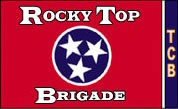Over the past 5 or 6 years, I've been documenting the condition of the area along the Emory River, in Roane County, Tennessee, now known as a "Superfund site". To locals the site is the old "paper mill" location, a work place for area residents since 1929.
This post was prompted by a recent visit to the site, with another local photographer Chris Oliver (his photos are HERE.)
We found, me more than Chris since I've been visiting since 2008, that many of the old mill buildings are now on the ground. Some waste material and asbestos have been removed, although there are still remnants scattered throughout the site.
We found, me more than Chris since I've been visiting since 2008, that many of the old mill buildings are now on the ground. Some waste material and asbestos have been removed, although there are still remnants scattered throughout the site.
The waste chemicals and oil drums I first saw in 2008 were removed in 2011. I like to think the above photo had something to do with that removal!
{Much of the following explanation of the site comes from
the National Priorities List (NPL) at this URL.}
The Clinch River Corporation site consists of approximately 30.5 acres and is located on the banks of the Emory River/Watts Bar Reservoir in Harriman, Tennessee.
The Clinch River Corporation site operated as a pulp and paper mill from 1929 until 2002 under various management companies.
The following companies owned and/or operated the paper and pulp mill throughout its operational history: the Mead Corporation, Inc.; the Harriman Paperboard Corporation; the Clinch River Corporation; the Gibson Group; Mid-South Cogeneration, Inc.; Power Paper, Inc.; Power Paper, Limited; Power Paper Recycling, Inc.; and American Kraft Mills of Tennessee, LLC (AKM). AKM, being the last operator, receives the brunt of current criticism locally and in the media, but all have contributed to the legacy we have in Harriman today.
Byproducts of the manufacturing process include spent processing liquids (black liquor), coal tar constituents (polynuclear aromatic hydrocarbons or PAHs), and piles of wastepaper.
Recent investigations suggest that off-site migration from contaminated source areas of dioxins, furans, PAHs and several metals into Watts Bar Reservoir, may have affected the fishery. The Emory River (Watts Bar Reservoir) is used for recreational and subsistence fishing. An estimated 54,750 pounds of fish are harvested annually from the Watts Bar Reservoir. In addition, the Emory River/Watts Bar Reservoir is a habitat for three federally designated endangered mussel species, including the Finerayed Pigtoe mussel, Purple Bean mussel and the Alabama Lamp mussel.
In September 2011, the EPA conducted an emergency removal at the site. The EPA removed 63 drums of hazardous material, contaminated soil from the drum storage area, and 20,000 gallons of black liquor from the site. (I like to think I had a little something to do with that...having posted photos back in 2008!)
The state of Tennessee referred the site to the EPA to allow for a comprehensive cleanup to address all the human health and environmental risks posed by the site. Other federal and state cleanup programs were evaluated, but are not viable at this time. The EPA received a letter of support for placing this site on the NPL from the state.
The long abandoned paper mill on the Emory River has been proposed as a federal Superfund site.
If the former Clinch River Corporation's property is added to the Environmental Protection Agency's National Priorities List of Superfund sites, it could force the owner to pay for cleanup.
Superfund is the federal program that investigates and cleans up the most complex, uncontrolled or abandoned hazardous waste sites in the country.
The EPA identifies the companies or people responsible for the clean up and requires them to either clean up the site or pay to have it cleaned up.
The site is now under a 7-year program to finally clean up the entire site. These first two years have shown some good progress, so I hope the work continues.
Under the operation of American Kraft Mills, the paper miller employed 50 to 100 millwork employees that once processed 120 tons of wood pulp per day. American Kraft Mills ceased operation in 2000, and sold much of the equipment in 2002. A fire gutted portions of the plant in 2004.
The following companies owned and/or operated the paper and pulp mill throughout its operational history: the Mead Corporation, Inc.; the Harriman Paperboard Corporation; the Clinch River Corporation; the Gibson Group; Mid-South Cogeneration, Inc.; Power Paper, Inc.; Power Paper, Limited; Power Paper Recycling, Inc.; and American Kraft Mills of Tennessee, LLC (AKM). AKM, being the last operator, receives the brunt of current criticism locally and in the media, but all have contributed to the legacy we have in Harriman today.
Byproducts of the manufacturing process include spent processing liquids (black liquor), coal tar constituents (polynuclear aromatic hydrocarbons or PAHs), and piles of wastepaper.
Recent investigations suggest that off-site migration from contaminated source areas of dioxins, furans, PAHs and several metals into Watts Bar Reservoir, may have affected the fishery. The Emory River (Watts Bar Reservoir) is used for recreational and subsistence fishing. An estimated 54,750 pounds of fish are harvested annually from the Watts Bar Reservoir. In addition, the Emory River/Watts Bar Reservoir is a habitat for three federally designated endangered mussel species, including the Finerayed Pigtoe mussel, Purple Bean mussel and the Alabama Lamp mussel.
In September 2011, the EPA conducted an emergency removal at the site. The EPA removed 63 drums of hazardous material, contaminated soil from the drum storage area, and 20,000 gallons of black liquor from the site. (I like to think I had a little something to do with that...having posted photos back in 2008!)
The state of Tennessee referred the site to the EPA to allow for a comprehensive cleanup to address all the human health and environmental risks posed by the site. Other federal and state cleanup programs were evaluated, but are not viable at this time. The EPA received a letter of support for placing this site on the NPL from the state.
The long abandoned paper mill on the Emory River has been proposed as a federal Superfund site.
If the former Clinch River Corporation's property is added to the Environmental Protection Agency's National Priorities List of Superfund sites, it could force the owner to pay for cleanup.
Superfund is the federal program that investigates and cleans up the most complex, uncontrolled or abandoned hazardous waste sites in the country.
The EPA identifies the companies or people responsible for the clean up and requires them to either clean up the site or pay to have it cleaned up.
The site is now under a 7-year program to finally clean up the entire site. These first two years have shown some good progress, so I hope the work continues.
Under the operation of American Kraft Mills, the paper miller employed 50 to 100 millwork employees that once processed 120 tons of wood pulp per day. American Kraft Mills ceased operation in 2000, and sold much of the equipment in 2002. A fire gutted portions of the plant in 2004.
Recently some efforts have been put toward cleaning up the site, with several of the old buildings being torn down. There is much left to be done, over the next 5 years.
See all photos taken on 3 separate visits to the old "Paper Mill" location in Harriman, Tennessee HERE. These photos show the condition of the site, as it was in 2008, 2009, and 2014. (Older photos appear at the top of the set.)
You will also note as you can compare the older shots that many of the old buildings are now missing.
That’s a start!
See all photos taken on 3 separate visits to the old "Paper Mill" location in Harriman, Tennessee HERE. These photos show the condition of the site, as it was in 2008, 2009, and 2014. (Older photos appear at the top of the set.)
You will also note as you can compare the older shots that many of the old buildings are now missing.
That’s a start!
.jpg)

.jpg)
.jpg)
.jpg)
.jpg)
.jpg)
.jpg)

.jpg)
















No comments:
Post a Comment